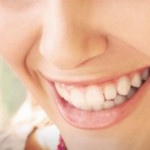 Do you think all dental implant materials are created equal? They’re definitely not. While patients shouldn’t have to think about the make, model and material of their dental implants like they would as if purchasing a car, they should have full confidence their board-certified periodontist has done his or her implant purchase homework.
Do you think all dental implant materials are created equal? They’re definitely not. While patients shouldn’t have to think about the make, model and material of their dental implants like they would as if purchasing a car, they should have full confidence their board-certified periodontist has done his or her implant purchase homework.
There are more than 60 manufacturers of FDA-approved dental implant materials that include the implant bases, or the “abutments.” Those are the connecting parts that fit into the implant bases, and the tooth-like “crowns.” Like vehicles on the market, these various dental implant systems can vary in sophistication, quality and reliability.
From the design of the threads, the chemistry of the surface, and the connection to the crown that goes on top of it, implants can vary greatly. These factors all attribute to performance and long-term outcome. You need to be sure your practitioner only works with dental implant manufacturers with great track records — ones who have invested time and research in their products and can prove clinical success.
What Lies Beneath
A single dental implant starts with the base. This should consist of a Grade 4 titanium or titanium alloy inert screw that will fuse with your natural bone, providing a safe, stable base and acting as the new tooth replacement “root.” We can thank a Swedish orthopedic surgeon for this process, known as osseointegration (“os” is Latin for “bone”). In 1952, Dr. Per-Ingar Branemark first discovered how titanium fuses with our natural bone. Today we consider Per-Ingar Branemark the father of modern dental implants since the field of dentistry quickly applied his orthopedic discovery, with excellent results achieved through the subsequent decades.
Dental Implant Composition
The overall dental implant process includes exposing the jawbone, drilling a small hole, and carefully screwing the implant into the bone. The gum situates on top of the implant to heal. The macroscopic body design of the implant greatly varies depending on patient need. Implant types include cylinder, thread, perforated and hollow. Clinical outcome also depends on the implant surface, which helps reduce healing time and assists your periodontist with the overall implant or “loading” process. Different types of surfaces include acid-etched, “grit-blasted,” or plasma-sprayed.
An abutment fits into the top of the implant. This is a connector between the implant and the crown that may be hexagonal or octagonal in shape, and sized depending on the position of the implant in the patient’s mouth. For instance, standard 3.5 mm up to 4.2 mm are typical for the front of the mouth, whereas smaller 2 mm or 3.5 mm are for patients who may not have sufficient bone density to warrant a larger implant.
At the top of the dental implant is an artificial tooth of bone-like ceramic material made to look exactly like natural teeth. This crown, also called a dental prosthesis, connects with special dental cement and a small screw.
The entire dental implant restoration is a finely tuned system. The patient should have confidence their periodontal dental practitioner has thoroughly studied the many dental implant options on the market and will not compromise on material, working only with “gold standard” companies. Whether a patient is replacing a single tooth or reconstructing an entire mouth, he/she needs to be sure that all implant products are today’s best in order to achieve fully functional, natural-looking and long-lasting results.



